Moissanite vs. Diamond Rings: Can You Tell the Difference? (Price & Test Results)
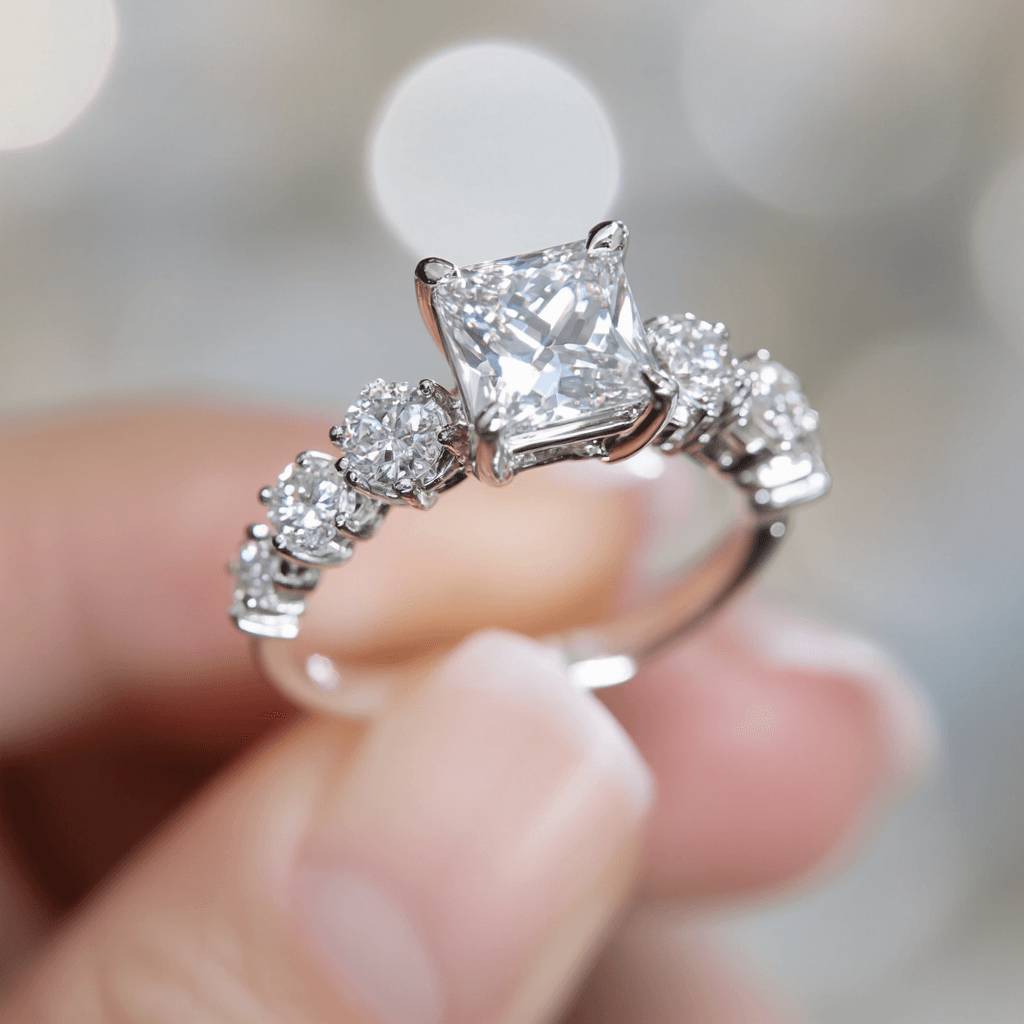
Choosing an engagement ring or fine jewelry often leads to the moissanite versus diamond debate. You might wonder: Are they the same? Can people tell the difference? Will moissanite fool a diamond tester?
This guide answers your key questions, comparing moissanite and diamond rings side-by-side. We'll cover sparkle, durability, price, and testing, helping you confidently choose the perfect stone for you.
Key Takeaways: Moissanite vs. Diamond
- Appearance: Moissanite and diamonds look very similar to the untrained eye. Moissanite often has more colorful sparkle ("fire").
- Durability: Both are very hard and suitable for everyday wear. Diamond is the hardest (10 on Mohs scale), moissanite is second hardest (9.25-9.5).
- Price: Moissanite is significantly more affordable than diamonds of similar size and quality.
- Source: Diamonds are mined or lab-grown (carbon); most moissanite is lab-grown (silicon carbide).
- Testing: Basic heat-based diamond testers often mistake moissanite for diamond. Advanced testers can tell them apart.
(Ready to explore stunning, affordable brilliance? Browse our collection of moissanite rings today!)
What Exactly Are Moissanite and Diamond Rings?
Understanding the basics helps differentiate these beautiful stones.
- Diamond Rings: Feature diamonds, natural or lab-grown gemstones famous for their hardness and sparkle. Composed of pure carbon formed under immense pressure, they are a traditional symbol of luxury and endurance.
- Moissanite Rings: Showcase moissanite, a gemstone made of silicon carbide. Originally discovered in a meteor crater by Dr. Henri Moissan, natural moissanite is incredibly rare. The moissanite in jewelry today is lab-created, offering ethical sourcing and exceptional brilliance often compared to diamonds. If you want to dive deeper, you can learn more about what moissanite is and its journey into jewelry.

Can You Spot the Difference Visually?
Telling moissanite and diamond apart just by looking can be tricky, even for experts. However, subtle differences exist:
Sparkle (Brilliance and Fire)
- Brilliance: Refers to the white light return, making the stone sparkle. Moissanite is slightly more brilliant than diamond.
- Fire: Describes the rainbow flashes of light. Moissanite has significantly more fire than diamond, sometimes called the "disco ball" effect. Diamonds have fire, but it's typically less intense.
While moissanite technically wins on sparkle metrics, the type of sparkle is subjective. Some prefer the fiery rainbow flashes of moissanite, others the balanced brilliance and fire of a diamond.
Color
- Diamonds: Graded on a color scale from D (colorless) to Z (light yellow/brown). Natural fancy colored diamonds also exist.
- Moissanite: Modern moissanite (like Forever One) is typically colorless or near-colorless, comparable to high-grade diamonds. Older or lower-quality moissanite might have slight yellow or greenish tints.
To the naked eye, high-quality moissanite and diamonds can appear equally colorless.
Clarity (Internal Flaws)
- Diamonds: Natural diamonds usually contain internal flaws (inclusions) formed during their creation. Flawless diamonds are rare and expensive. Lab diamonds can also have inclusions.
- Moissanite: Being lab-grown under controlled conditions, moissanite typically has very high clarity with minimal, often microscopic, inclusions (often VVS1-2).
You likely won't see clarity differences without magnification in good quality stones of either type.
Hardness and Durability: Can They Withstand Daily Wear?
Both gemstones are exceptionally durable and suitable for rings worn daily.
- Diamond: Ranks 10/10 on the Mohs scale of hardness – the hardest known mineral. Highly resistant to scratching.
- Moissanite: Ranks 9.25-9.5/10 on the Mohs scale. Second only to diamond in hardness among gemstones, making it extremely resistant to scratches and abrasions.
Both require care, but moissanite's hardness ensures it holds up beautifully over time. Many wonder if moissanite rings tarnish or get cloudy over time – rest assured, high-quality moissanite maintains its clarity and sparkle.
Price Comparison: Moissanite Rings vs. Diamond Rings
This is often the deciding factor. Moissanite offers significant cost savings.
- Moissanite: Priced primarily by size (mm) and type (e.g., colorless). A moissanite stone can be 80-90% less expensive than a natural diamond of equivalent size and visual quality.
- Diamonds: Priced based on the 4 Cs (Carat, Cut, Color, Clarity) and origin (natural vs. lab-grown). Prices increase exponentially with size and quality.
For a set budget, you can typically get a much larger, higher-quality looking moissanite than a diamond. This affordability helps many consider if moissanite rings are worth it for their specific needs.
Will Moissanite Trick a Diamond Tester?
Yes, often. Basic handheld diamond testers primarily measure thermal conductivity (how well a stone conducts heat).
- Diamonds are excellent thermal conductors.
- Moissanite is also a very good thermal conductor.
Because their thermal properties are similar, many standard diamond testers will incorrectly identify moissanite as diamond.
However, advanced multi-testers used by gemologists measure electrical conductivity or other optical properties. Moissanite conducts electricity differently than diamond, allowing these more sophisticated tools to distinguish between them.
So, while your local pawn shop's basic tester might be fooled, a professional gemologist can tell the difference.
Quick Comparison: Moissanite vs. Diamond
|
Feature |
Moissanite |
Diamond |
|
Material |
Silicon Carbide (SiC) |
Carbon (C) |
|
Source |
Lab-Grown (Mostly) |
Natural or Lab-Grown |
|
Hardness |
9.25 - 9.5 Mohs |
10 Mohs |
|
Brilliance |
Higher |
Very High |
|
Fire |
Higher (Rainbow Flashes) |
High (Less Intense Rainbow) |
|
Clarity |
Typically High (VVS+) |
Varies Widely |
|
Color |
Colorless / Near-Colorless |
Colorless to Yellow/Brown+ |
|
Price |
Significantly Lower |
Significantly Higher |
|
Basic Test |
Often Passes as Diamond |
Passes as Diamond |
|
Adv. Test |
Identified as Moissanite |
Identified as Diamond |
Making Your Choice: Moissanite or Diamond?
The "better" choice is personal. Both offer beauty and durability.
Choose a Diamond Ring if:
- You value the tradition and natural origin of mined diamonds.
- Your budget accommodates the higher price point for the size/quality you desire.
- The specific, balanced sparkle of a diamond appeals most to you.
Choose a Moissanite Ring if:
- You want maximum sparkle and size for your budget.
- Ethical sourcing and environmental impact are priorities (moissanite is lab-grown).
- You love intense, fiery sparkle.
- High clarity is important without the premium diamond price tag.
Ultimately, is a moissanite engagement ring a good choice? For many, the answer is a resounding yes due to its beauty, durability, and value. Some may worry about perception, but understanding the facts helps dispel myths and address concerns about whether moissanite engagement rings are tacky (spoiler: they're stunning!).
Ready to Find Your Perfect Moissanite Ring?
Moissanite offers a brilliant, ethical, and affordable alternative to diamonds without compromising on beauty or durability. Explore our curated collection of exquisite moissanite rings and discover the sparkle that speaks to you.
Need help with sizing? Check out our Moissanite Ring Sizing Guide . And if you're wondering about adjustments later, learn if moissanite rings can be resized


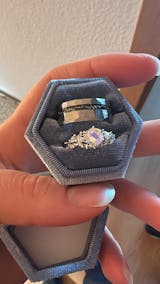
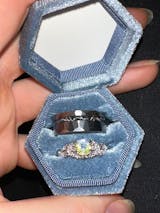
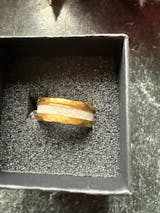
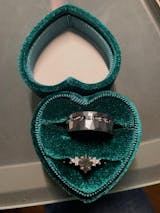
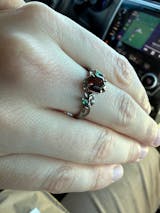
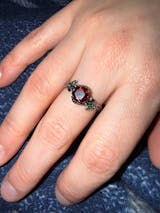
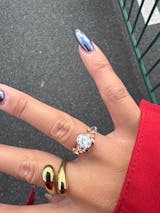
Leave a comment